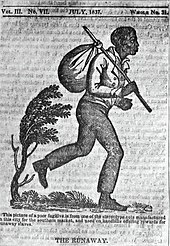The L.A.W. of the Empire of Morocco
The Glossary serves as a comprehensive guide, providing links to every item within this book. It is designed to assist students in completing assignments more efficiently and in a more organized manner, especially when multitasking.
Mission Statement
The purpose of this Dictionary is to connect the historical timeline of the Moroccan Empire to the present day, in conjunction with the AMPAC Study Sessions. Inside, you will find a wealth of information, including:
-
Moroccan History: A detailed account of the Moroccan Empire's past.
-
Treaties: Important treaties that have shaped the Empire.
-
Key Definitions: Essential terms defined for better understanding.
-
Maps: Detailed maps of all Moroccan territories.
-
Foreign Moroccan Countries or States: Information on foreign states within the Moroccan Empire.
-
Internal Moroccan States' Declarations of Independence: Key declarations from internal states.
-
Constitutions: Constitutions of all jurisdictions within the Empire of Morocco.
-
Laws: Internal and external laws governing Moroccan states and foreign jurisdictions within the Empire.
-
AMPAC Study Sessions: Documents and definitions discussed in AMPAC Study Sessions.
Continuous Updates
The L.A.W. of the Empire of Morocco will be continuously updated to ensure that the information remains current and accurate.
Special | A | B | C | D | E | F | G | H | I | J | K | L | M | N | O | P | Q | R | S | T | U | V | W | X | Y | Z | ALL
D |
|---|
Declaration on the Granting of Independence to Colonial Countries and PeoplesDeclaration on the Granting of Independence to Colonial Countries and Peoples | OHCHRVideo: Declaration on the Granting of Independence to Colonial Countries and Peoples United Nations Video (4:29 sec) | |
Decolonization: The Legal ArgumentDecolonization Strategy: What is your legal argument during the varying stages of decolonization? Signatory Powers of Third States parties to the multilateral Act of Algeciras of 1906 per intertemporal Law (Territories to decolonize in full) | |
DrapetomaniaDrapetomaniaSamuel A. Cartwright Samuel A. Cartwright (1793–1863)
Samuel A. Cartwright (1793–1863)
Drapetomania was a proposed mental illness that, in 1851, American physician Samuel A. Cartwright hypothesized as the cause of enslaved Africans fleeing captivity.[1]: 41 [2] This hypothesis was based on the belief that slavery was such an improvement upon the lives of slaves that only those suffering from some form of mental illness would wish to escape.[3][4] Cartwright specifically cited the tendency of slaves to flee the plantations that held them. Since slaves happy with their condition would not want to leave, he inferred that such people had to be sick, impervious to the natural order of things. He published an article about black slaves' illnesses and idiosyncrasies in De Bow's Review.[5][6] Contemporarily reprinted in the South, Cartwright's article was widely mocked and satirized in the northern United States. The concept has since been debunked as pseudoscience[7]: 2 and shown to be part of the edifice of scientific racism.[8] The term derives from the Greek δραπέτης (drapetēs, 'a runaway [slave]') and μανία (mania, 'madness, frenzy').[9] As late as 1914, the third edition of Thomas Lathrop Stedman's Practical Medical Dictionary included an entry for drapetomania, defined as "vagabondage, dromomania; an uncontrollable or insane impulsion to wander."[10] Description[edit] Engraving of an escaped slave, published in 1837
Engraving of an escaped slave, published in 1837
Cartwright described the disorder—which, he said, was "unknown to our medical authorities, although its diagnostic symptom, the absconding from service, is well known to our planters and overseers"[9]—in a paper delivered before the Medical Association of Louisiana[7]: 291 that was widely reprinted. He stated that the malady was a consequence of masters who "made themselves too familiar with [slaves], treating them as equals".[11]
| |